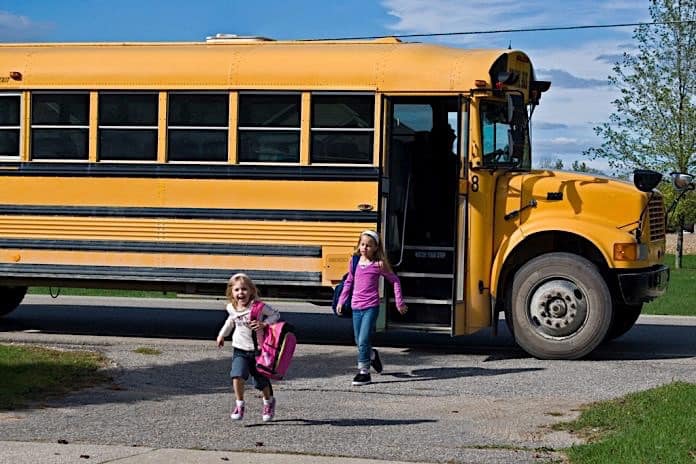While recognizing the unparalleled safety record of yellow school buses, Bellwether Education Partners sponsored a panel discussion this month in the nation’s capital to discuss if evolution of the school bus industry can continue through increased collaboration with metropolitan planning organizations (MPOs)
Bellwether Education Partners focuses on all aspects of education by engaging in research, developing case studies, issuing blogs and other publications and advising education organizations on strategic and operational issues. The organization invited a “broad range” of professionals engaged in education or transportation policy for the event on May 2 at Washington, D.C.’s Union Station. The participants included special educators, state and school district representatives, Capitol Hill staffers, school bus practitioners and policy analysts.
In recent years, Bellwether staff has published reports on early childhood education, politics of education policy at the state, school district and rural levels, education transition policies for incarcerated students, charter schools and more. The panel discussion coincided with the release of a 72-page report on the school busing written by Phillip Burgoyne-Allen and Jennifer O’Neal Schiess.
Titled, “Miles to Go: Bringing School Transportation into the 21st Century,” the authors wrote: “The dominant yellow bus transportation system is designed to serve a ‘traditional district,’ where students attend centrally located neighborhood schools. But more and more districts are offering families the option to choose from among public schools regardless of their geographic proximity to home…The transportation needs of students who are now crossing town versus crossing the street to attend school are changing the way these districts must think about and deliver school transportation.”
“We did not suggest another body should take over school transportation,” Schiess added, “but there may be opportunities to look at school transportation from a different point of view. We wanted to get that conversation going.”
The paper also highlighted that school buses are “unequivocally” the safest option available to students in getting to and from school. But it recognized the location and cost of providing service, and where service quality was low.
Advisors to the year-long project included a cross section of public school and contractor transportation officials. Panelists included Cindy Stuart, a Florida school board member and voting member of the Hillsborough County Metropolitan Planning Organization; Mike Hughes, the assistant director of transportation at Boston Public Schools; Joel Weaver, a director and principal at Chief Tahgee Elementary Academy Shoshoni Language immersion charter school in southeast Idaho; and Kristin Blagg, a research associate at the Urban Institute.
The comprehensive report examines the organization of school bus transportation nationwide, the effect of vehicle and emission regulations, the environmental impact of school buses, the McKinney-Vento Homeless Assistance Act, special needs, tripper service, school bus safety and more.
The report cites educational trends affecting the provision of school bus transportation service. Among the growing popularity of school choice and charter schools in K-12 education, the report states, “…there are now over 6,000 charter schools (with) nearly 3 million students nationwide.”
Technological trends from the automotive field impacting school transportation include an estimate of 4 million hybrid electric cars on U.S. roads,. These include the burgeoning popularity of personal transportation offered by companies such as Uber and Lyft, and automobile manufacturers now offering self-driving/parking with automatic braking that come “right around the corner.”
Because of the changing education and transportation landscape nationwide, the authors suggest school districts should consider services offered by regional transportation entities (regional councils or metropolitan planning organizations) to assist in the design of transportation systems that are “less beholden to neighborhood or even district boundaries.” For example, said Schiess, “…traffic studies and GIS mapping. There might be some nice synergies there.”
Other ideas were offered. Weaver suggested putting a teacher onboard school buses to deliver instruction for school bus trips that take longer than one hour.
Bellwether offered three specific policy innovations to improve current school transportation systems. First, states and school districts should “invest in technologies that enable districts to collect, analyze, and use data to improve operational efficiency and customer service.” Second, states should create funding incentives for short-term and long-term efficiency gains in transportation services. Lastly, local communities should “customize transportation systems to meet all student’s needs,” especially disabilities.


















